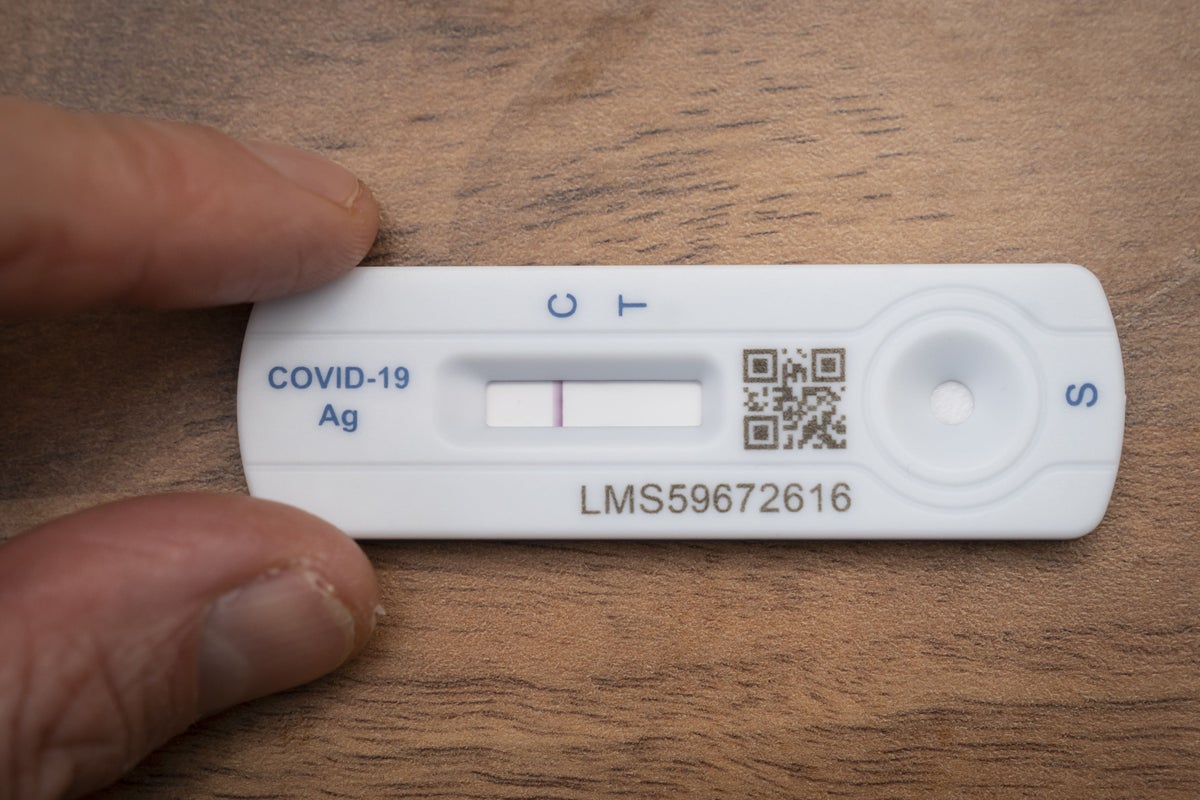
Covid-19 levels remain on an “uncertain” trend in most of the UK, although Scotland has seen a decrease, figures show.
Total infections for the whole of the country are broadly unchanged, suggesting the current rise may have levelled off.
The number of people in hospital in England with coronavirus has increased in the past week, however.
An estimated 1.52 million people in private households in the UK were likely to have Covid-19 in the week to March 7, compared with 1.55 million in the previous week, according to the Office for National Statistics (ONS).
Infections have been rising since the end of January, driven by the Omicron variant BA.2.75.
Levels are still some way from the peak reached during the wave of the virus at Christmas 2022, when the UK total climbed to just under three million.
Covid-19 is currently most prevalent in England, where one in 40 people are estimated to have the virus.
The latest estimate for Wales is one in 45, while for Scotland it is one in 50 and for Northern Ireland it is one in 70.
Michelle Bowen of the ONS said: “While infections have decreased in Scotland, the trends remain uncertain across the rest of the UK.
“It’s a mixed picture across English regions and age groups, though positivity continues to rise in the over-70s.”
The percentage of people aged 70 and over in England likely to test positive for Covid-19 is estimated to be 3.3%, up from 2.7% a week earlier and 2.3% two weeks ago.
Other age groups have either shown a decrease or an uncertain trend.
Among the regions of England, the percentage testing positive has risen in the North West and Yorkshire/Humber, fallen in eastern England, the East Midlands and London and is uncertain elsewhere.
This is the penultimate update of the ONS infection survey, which is the most reliable measure of the prevalence of Covid-19 but which is coming to a halt later this month.
Any future surveillance of coronavirus will be announced “in due course” after a review is carried out to ensure it is “cost effective”, according to the UK Health Security Agency (UKHSA).
The decision brings to an end a survey that has run continuously for nearly three years and which has been recognised worldwide as the “gold standard” for estimating levels of coronavirus among the population.
Besides providing vital data on the scale and duration of each wave of the virus, the survey has supplied crucial information on the emergence of new variants, antibody levels and long Covid.
Separate NHS figures published on Thursday show there are 8,434 people in hospital in England who have tested positive for coronavirus, up 10% week on week.
Patient numbers have been on a broad upwards trend since the end of January, mirroring the rise in prevalence of the virus among the population.
The total peaked at 9,535 patients during the wave of infections at Christmas 2022.
Hospital admissions of people testing positive for Covid-19 stood at 10.1 per 100,000 last week, up from 9.5 the previous week and the highest since the end of 2022.
The admission rate for people aged 85 and over is 121.4, up from 110.0, while for 75 to 84-year-olds it is 53.6, up from 49.0.
Dr Gavin Dabrera, UKHSA deputy director of Covid-19 vaccines and epidemiology, said the rise in rates among the over-75s “highlights the importance of the spring booster campaign and I would encourage everyone who is eligible to come forward and top up their protection when they are called by the NHS in England next month”.
The booster campaign will begin on April 17 and will see everyone aged 75 and over, those in care homes and vulnerable people offered a fresh dose of Covid-19 vaccine.







